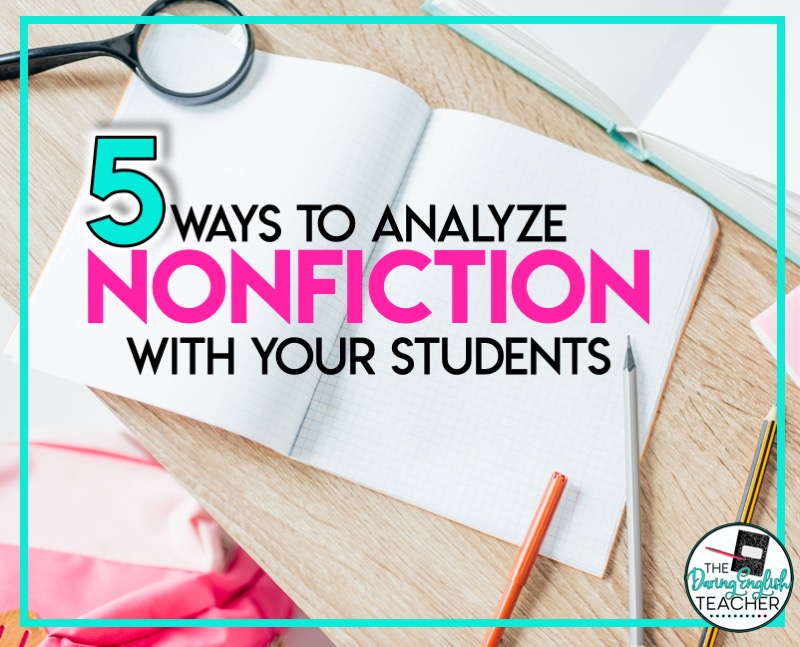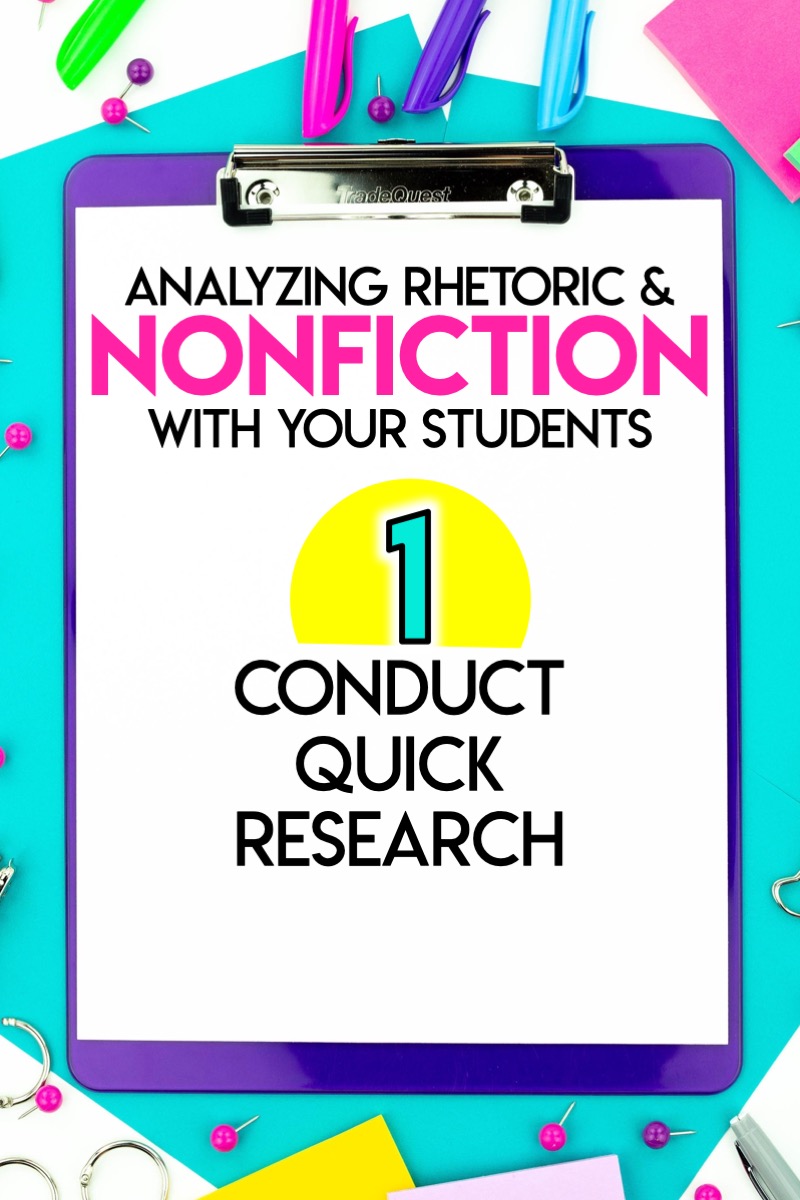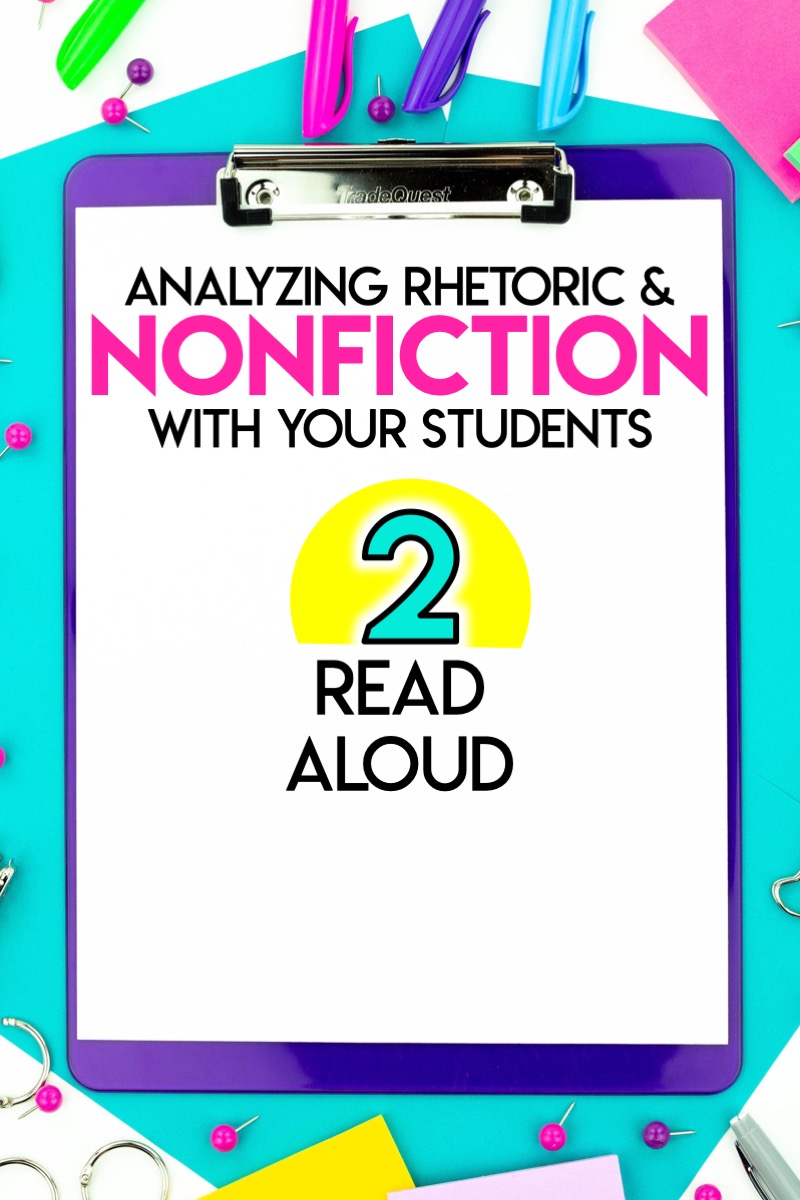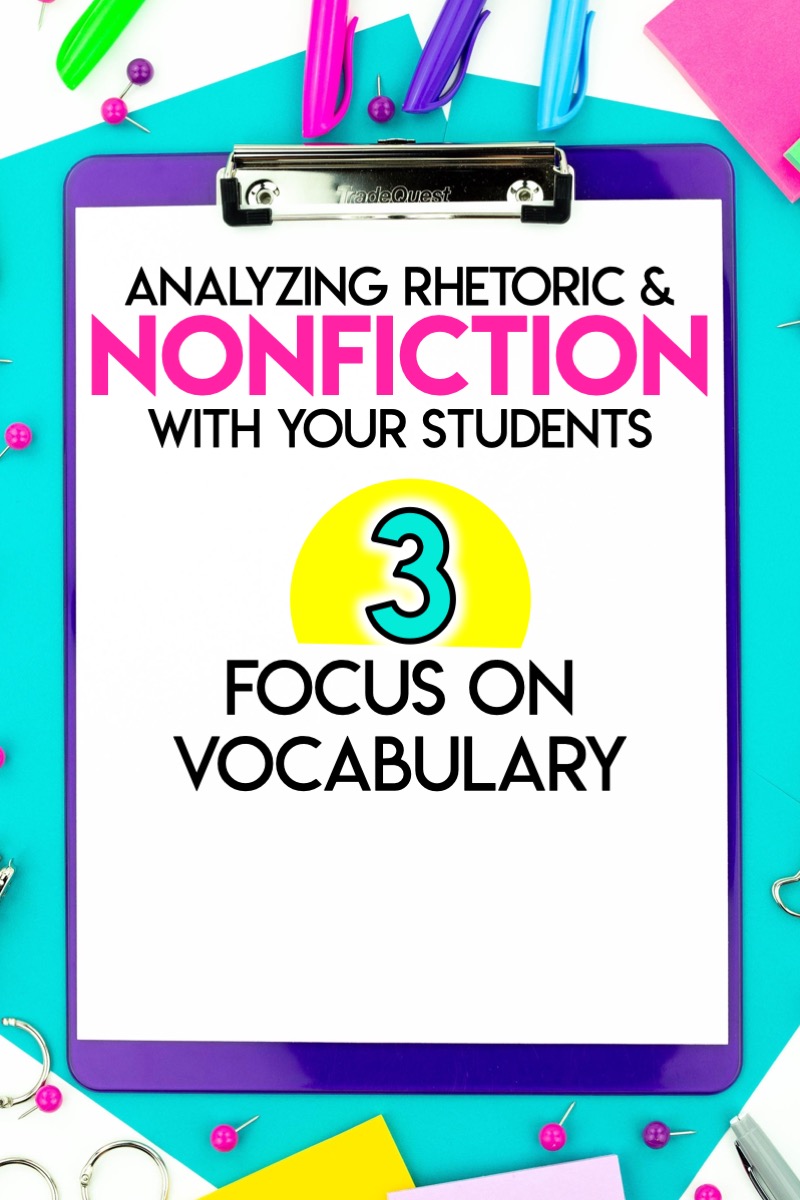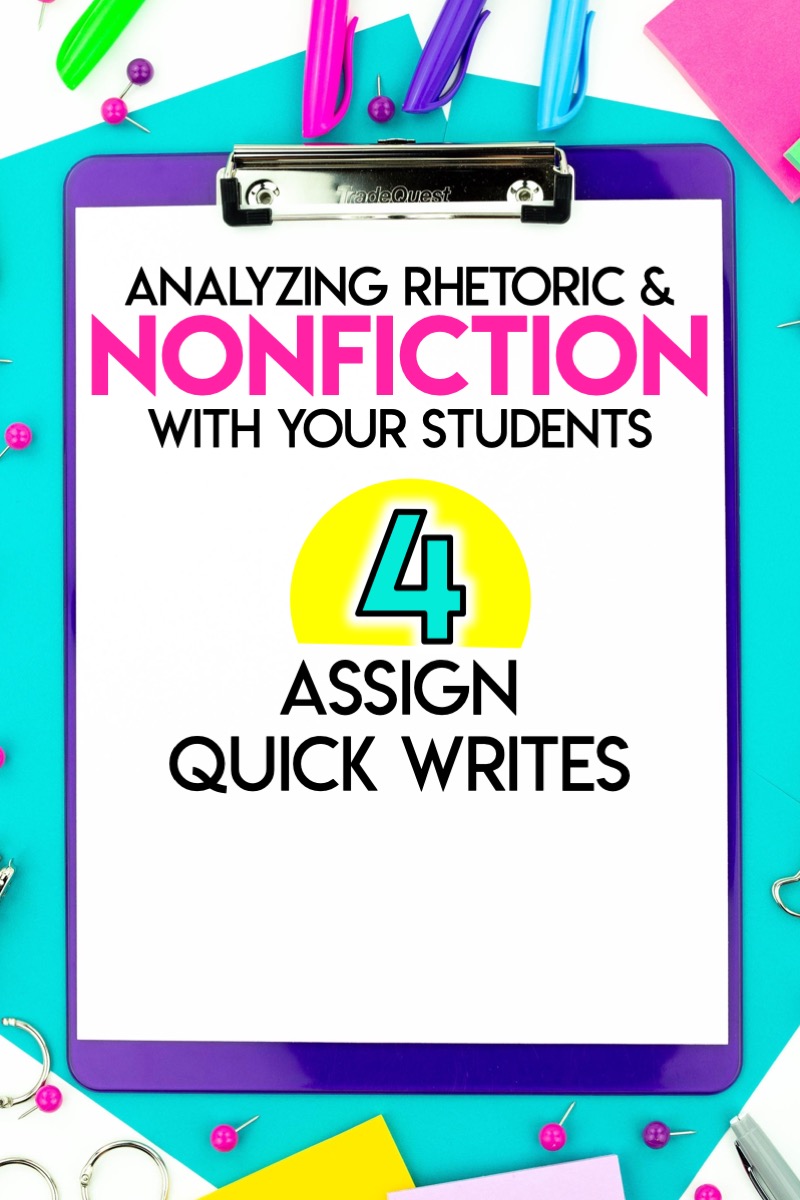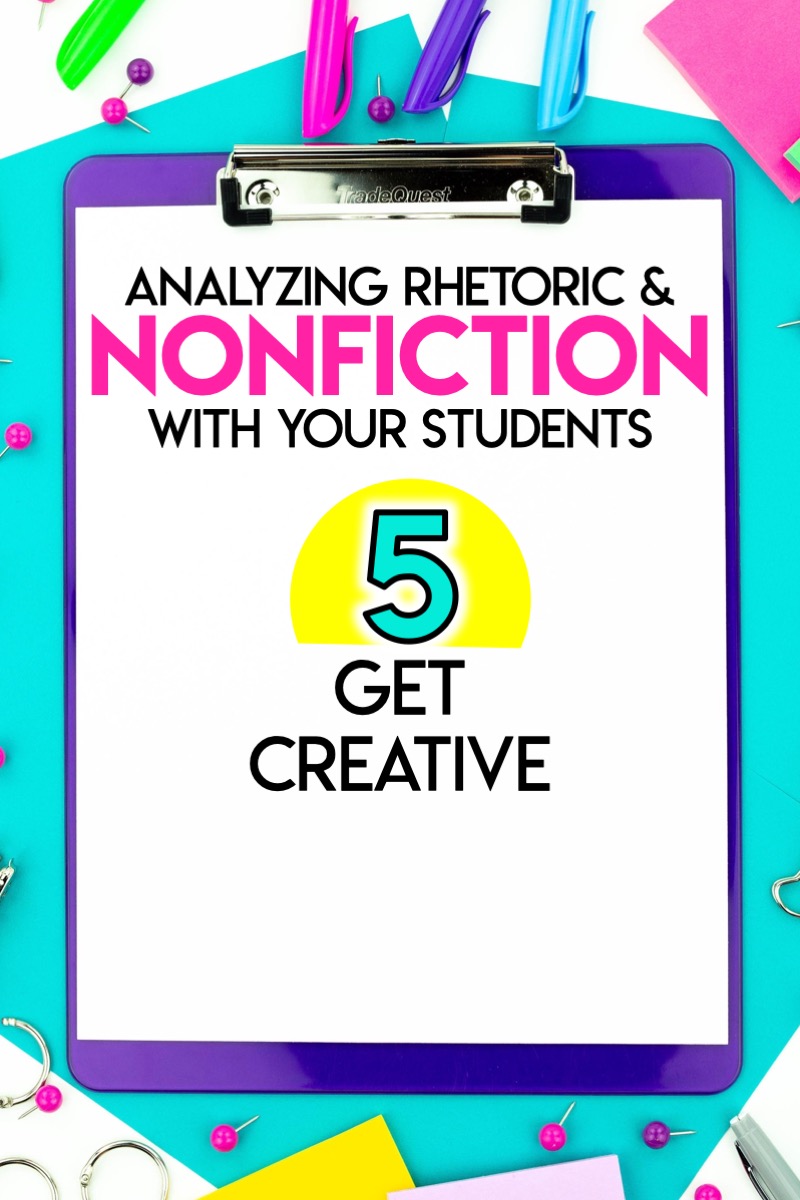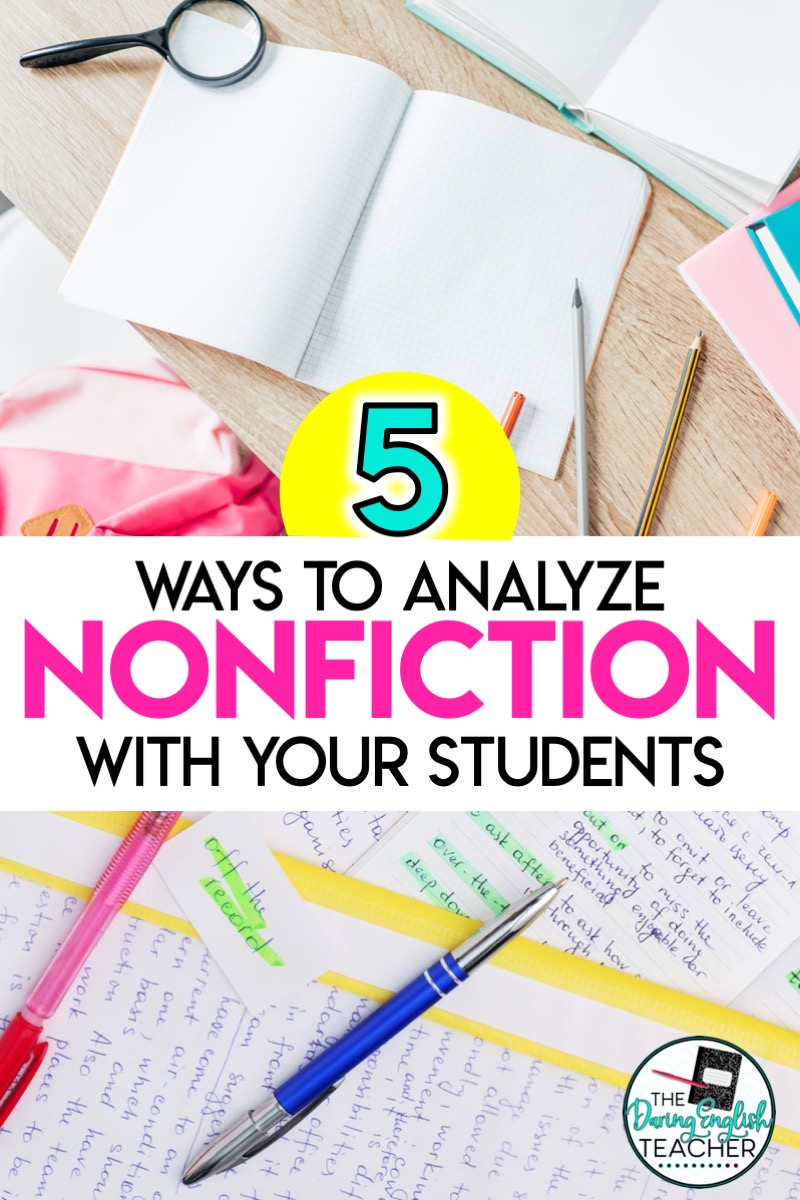Analyzing nonfiction and rhetoric in the secondary ELA classroom is one of my favorite teaching units because it allows teachers to incorporate engaging topics that are both relevant and controversial in the classroom.
Teaching students to read and analyze nonfiction can be a great tool to teach students a variety of skills, but it can also sometimes be difficult to teach. I think the biggest problem in teaching nonfiction in the English classroom, though, is trying to convince students that texts matters outside of school.
One of the best teaching strategies to incorporate into the middle or high school English classroom is to show students just how relevant nonfiction is. So, in order to do this, you need to explain to your students why they are reading Narrative of the Life of Frederick Douglass, An American by Frederick Douglass, for example, outside of the fact that the man led a fascinating and eventful life.
A few things the students should consider when reading nonfiction are tone, purpose, vocabulary expansion, and effectiveness. Here are a few ways to tackle these considerations:
1. Analyzing Nonfiction: Conduct Quick Research
Assign students a brief research assignment to explore new, anchor ideas. I often do this as quick poster projects where I assign student groups a topic and they must research their topic and write their findings on a poster to present to the class. The inclusion of an outside story on the same subject can allow the students to connect to the material in a new way and expand their minds to understand the purpose. It is like solving a mystery; you can’t do it without all the pieces. By having your students research and understand more of the context surrounding the text, it may illuminate another critical point in the text.
2. Analyzing Nonfiction: Read Aloud
Some students do better with hearing the text read aloud, and this is especially true for speeches. Whenever I introduce a new text to class, especially on that is short and quick to the point, I like to read it aloud to my students (even my seniors) so that I can model to tone and inflection of the piece. Another benefit to reading the text aloud to your students is that you can emphasize particular elements that you are trying to highlight and analyze. Another great teaching nonfiction text teaching strategy is to have students listen to the audio recording of the speech or text, especially if it is from the original author.
3. Analyzing Nonfiction: Focus on Vocabulary
Many nonfiction texts include words that our students do not know. When I have my students analyze new nonfiction texts in class, I encourage them to work together in partners to scan the text for words they do not know. Then students look up the definitions on their phones and share their findings with the class. An open discussion about the words they do not understand can teach both the specific students and their peers a lot too. Maybe their peers also did not know certain words either, and then this discussion will be beneficial for the entire class. This helps everyone in the class to improve their vocabulary while also improving their understanding of the text.
4. Analyzing Nonfiction: Quick Writes
Sometimes writing out their thoughts will help students develop a more concrete analysis of the text. When I analyze nonfiction with my students, I like to get them thinking on their own and comfortable with their analysis skills before moving on to a much larger writing assignment or project. I’ll assign multiple quick writes throughout my nonfiction unit. For a quick write, I instruct students to gather their thoughts and quickly write for about 10 minutes. Then I have students partner up and share their writing with one another. After a few minutes of sharing, I ask for a few volunteers to read either their paper or their partner’s paper to class. This shows students that there are multiple ways to analyze a text, and it also gives students more examples.
Here are some of the quick write prompts I frequently use in my classroom.
- Why do you think the author wrote this text?
- What was the author’s purpose in writing this text?
- What is one strategy that the author uses that makes this text particularly effective?
- Who was the intended audience for this text and why?
- How does the author establish ethos in this text?
- What is the author’s main idea, and how does the author support this idea?
- Do you agree with this text? Explain why or why not.
5. Analyzing Nonfiction: Get Creative
One acronym I use for rhetorical analysis is PAPA: purpose, audience, persona, argument. At the end of our nonfiction and rhetorical analysis unit, I have students select their own nonfiction text to analyze. They read the text and analyze it using the PAPA acronym. Then, I have my students create an artistic PAPA Square as their final project.
Nonfiction can be a great way to talk about different rhetorical devices and strategies. Nonfiction is also a great way to expand students’ worldview by introducing them to a wide variety of topics. Some might be historical, others more modern, and some are definitely on the controversial side, but they always convey an important message. Through these analytical tools, your students will be able to get the full effectiveness of the nonfiction work you have decided to analyze together.
Teaching Resources:
Rhetorical Analysis Unit with Sticky Notes
Ethos, Pathos, Logos: Understanding Rhetorical Appeals

